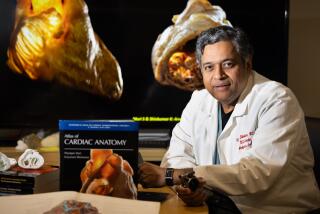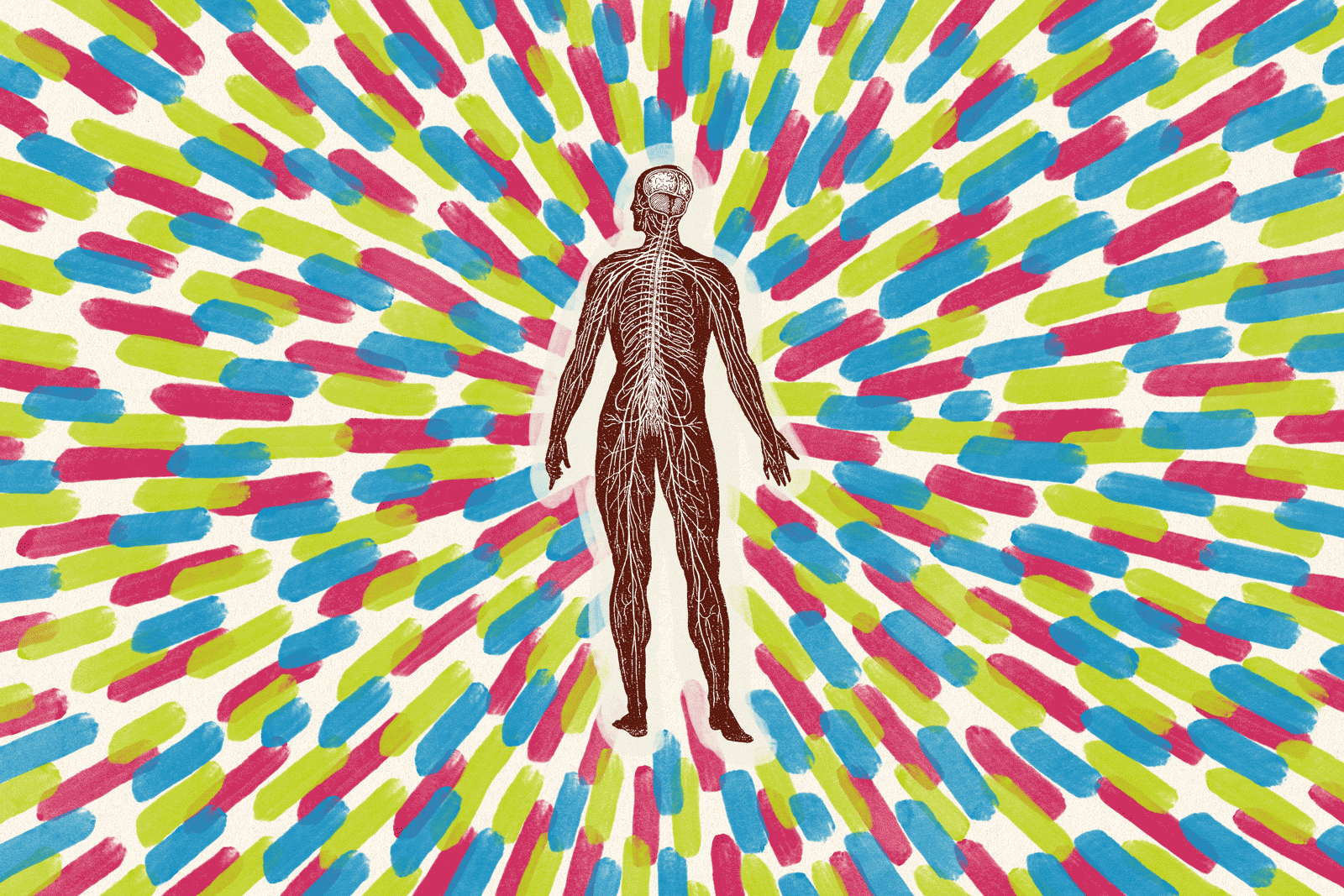Book Review : Picking Their Brains About the Mysteries of the Mind
- Share via
Neuro-: Life on the Frontlines of Brain Surgery and Neurological Medicine by David Noonan (Simon and Schuster: $19.95; 233 pages)
The human brain is the most distinguishing part of our body, the most fascinating, and probably the least understood. Unlike the other organs, the brain’s product--mind--cannot be directly observed. The pancreas secretes insulin; does the brain secrete thoughts? If so, where are they?
The link between brain and mind is very poorly understood. Yet doctors who treat the brain organically--neurologists and neurosurgeons--are frequently able to help their patients. “Neuro-” by David Noonan is the story of who they are and how they do it.
Noonan, a Los Angeles writer, approaches his subject from the doctors’ point of view and from the patients’. The chapters on brain surgery and brain surgeons are the best. To do research for them, he interviewed the surgeons and observed them at work. He writes:
“The brain exposed. Light falls on its gleaming surface for the first time. It beats lightly, steadily. It is pink and gray, the brain, and covered with tiny blood vessels, in a web. In some openings you can see the curve of the brain, its roundness. It does not look strong, it looks very soft, soft enough for you to push your finger through. When you see it for the first time, you almost expect sparks arcing across the surface of the cortex, blinking lights, the crackle of an idea. You stare down at it, and it gives nothing back, reveals nothing, gives no hint of how it works.”
Confident Practitioners
The reader learns that practitioners in this field are supremely confident of their knowledge and their skills and their ability to make the right decisions in difficult situations. “Brain surgeons cut people’s heads open,” Noonan writes. A simple but startling statement.
He has great affection and admiration for these doctors who do this work, and that comes through loud and clear. He is also aware of the difficult and unusual position that doctors--particularly surgeons--are in. Noonan is very perceptive about this.
Surgeons must care about their patients, but they cannot become emotionally involved with them. The patient’s condition is part of the job, and it must always remain part of the job:
“What is all new and strange to the patients and his family is old and familiar to the surgeon,” Noonan writes. “The patient rightly considers his brain tumor to be the most important brain tumor that ever existed, while the doctor knows that the patient’s brain tumor is one of many a doctor will have to confront over the course of his career.”
Neurological Problems
While the first half of the book deals with doctors and patients and the relationship between the two, the second half deals in detail with three serious neurological problems: amyotrophic lateral sclerosis (Lou Gehrig’s disease), which affects movement; aphasia, which affects speech, and schizophrenia, which affects thought.
This part of the book is less successful than the first. It has a padded feeling. The chapter on Lou Gehrig’s disease, for example, contains an extended discussion of Lou Gehrig’s baseball career. The chapter on schizophrenia includes a seemingly endless diatribe against frontal lobotomies, which were extensively performed in this country from 1935 to 1960 as a treatment for mental illness. These chapters are more descriptions of diseases than “life on the frontlines of brain surgery and neurological medicine,” which, after all, is the subtitle of the book.
But they do have some value. The chapter on Lou Gehrig’s disease includes a profile of Lance Meagher, a physician who has lived with ALS for 13 years and, though virtually paralyzed, continues in limited practice and is making plans to fly solo around the world. Meagher is probably the most interesting person Noonan presents.
Missing the Soul
At the very end of the book, in a short chapter appropriately titled “Conclusion,” Noonan voices his only reservations about the doctors who work on the brain. By restricting their activity to the flesh, he says, they are missing the soul. Doctors treat the body but not the mind. Emotions are more than the sum total of complicated electrochemical firings in the brain.
“Yes,” Noonan says, “love is a chemical reaction, but there is more to it than that. There is, I believe, something beyond biology, and it is a factor, somehow, in the function of every living human cell and in every human thought and deed. In a sense, the human nervous system is a complex set of conditions necessary for the existence of the soul.”
This assertion, on the book’s penultimate page, comes out of the blue. It does not follow from what has come before, and Noonan has hardly raised the question, much less prepared the reader for his conclusion.






